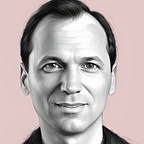Join Stanford researchers
to form the largest crowdsourcing research project ever
Our goal is to design and develop the next-generation crowdsourcing platform. Want to be a researcher on our team? Join us and sign up by February 16th.
Aspiring researchers — students, professionals, and enthusiasts — sign up here before February 16th.
Some research projects are too big and too important to tackle alone. Sometimes, we need to team up.
In my time on the faculty in Stanford’s Computer Science department, I’ve observed that people who are aiming to get research experience or launch their research career will often fall into an expertise valley. Undergraduates are assigned extremely tightly scoped activities within research projects, getting little room for creativity. Then these folks get into PhD programs, have literally the entire space of human knowledge to explore, and don’t have enough scaffolding to make quick progress.
Here in the Stanford HCI Group, we’re going to create a crowdsourced research team to tackle both these challenges together. We’ll gather as many talented folks as we can get, and work to build out that intervening bridge between tightly-scoped work and open-ended exploration. It will have far more flexibility than a typical research experience, but with a focused goal where we can bring each other back on track each week and nobody gets lost.
What’s the project?
Whether you need help gathering data, labeling machine learning training examples, running experiments, or transcribing audio, today we use crowdsourcing platforms such as Amazon Mechanical Turk (www.mturk.com). However, these platforms are notoriously bad at ensuring high quality results, producing respect and fair wages for workers, and making it easy to author effective tasks. It’s not hard to imagine that we could do better.
This research will be a complete design, implementation, launch, and evaluation of a new crowdsourcing platform. What would it take to create an effective marketplace? One where workers have more power in the employment relationship, or could take additional responsibility for the result quality? How might we design such a market? Could we launch it and become the new standard? This research in human-computer interaction will involve a combination of design thinking, web development, and experimental design.
This is far more ambitious than your typical project. It’s an entire marketplace design question. Thus, we’re banding together to solve it.
What might my contributions lead to?
Well, first, there’s creating a crowdsourcing market that becomes the new standard. This could lead to a far better future for crowdsourcing and crowd work, and millions of people could eventually use it. It’s research, of course, so there’s always risk it might not work out — but if we knew it would work, it wouldn’t be research!
Second, we’ll be planning papers to top-tier conferences based on our work. If you are considering an MS or especially a PhD program, being a heavily contributing author on a paper can greatly improve your chances. How much you contribute to the project will determine author order.
Last, I really do hope to build relationships with a diverse range of researchers. Join our team.
What experience do I need?
In research? None. Anybody who is smart and dedicated can help us envision the future of crowdsourcing and articulate how it might play out.
In terms of skills, there are many different ways that you can participate. If you want to contribute design skills, having a portfolio of past work would be helpful. If you are a CS major or enjoy programming, you’d likely need to have completed an introductory programming course sequence to succeed. We’ll be doing web programming, so background in technologies such as HTML, CSS, jQuery, or Ruby on Rails will be very helpful. If you have experience in social science methods (e.g., surveys, qualitative work, designing controlled experiments), there will be lots to do as well to help us make sure we’re creating the right thing.
For everyone, a class in human-computer interaction (such as Scott Klemmer’s HCI Online, which you can complete as prep) will be a huge leg up.
What’s the process and time commitment?
We’ll meet weekly over videochat and lay out our goals for the next week. At the end of the week, you’ll submit what you’ve been working on. Your peers and a Ph.D. student here at Stanford will peer critique the work, and we’ll talk about the best stuff each week in our meeting. The sky’s the limit.
I’m sure we’ll adjust this as we go. Because, this entire crowdsourced research idea is a bit of a research project in itself, too.
How do I learn more?
There’s lots more info at the Aspiring Researcher Challenge web page. We’re building a worldwide team of aspiring researchers like you, the first and largest of its kind. So far, the program has attracted applications from about 600 students — come be part of it, and join our massive HCI research project.
We’re looking for sign-ups in teams of three. So grab a friend or two, or seek out some new friends!
